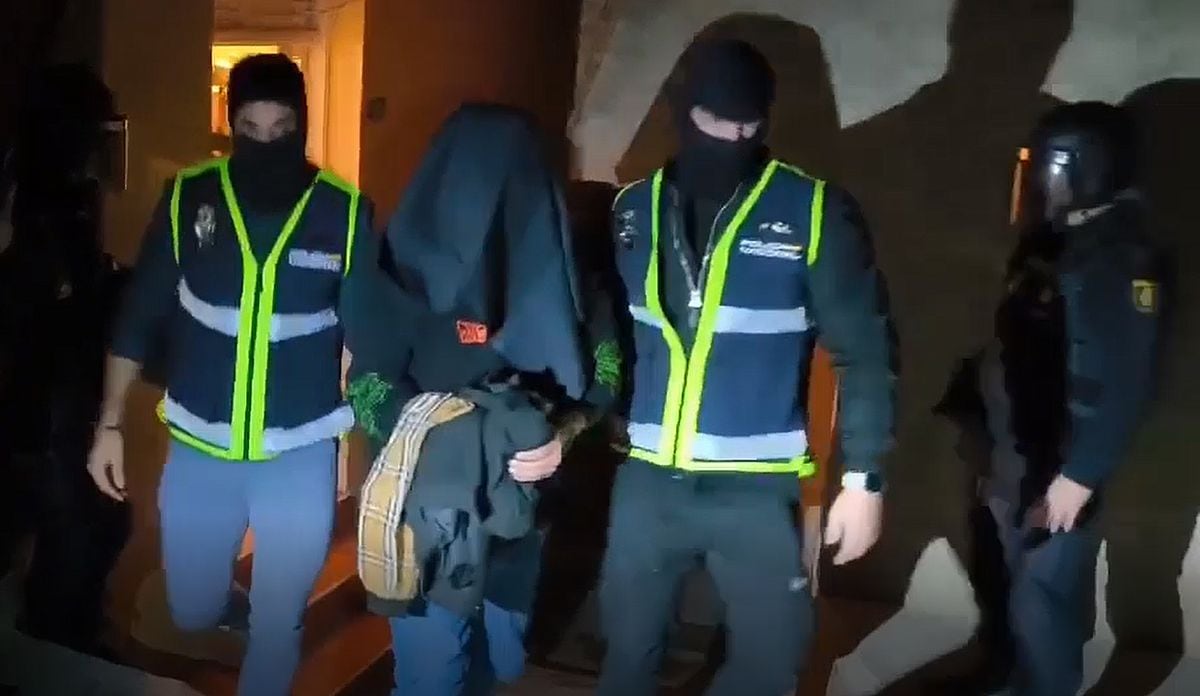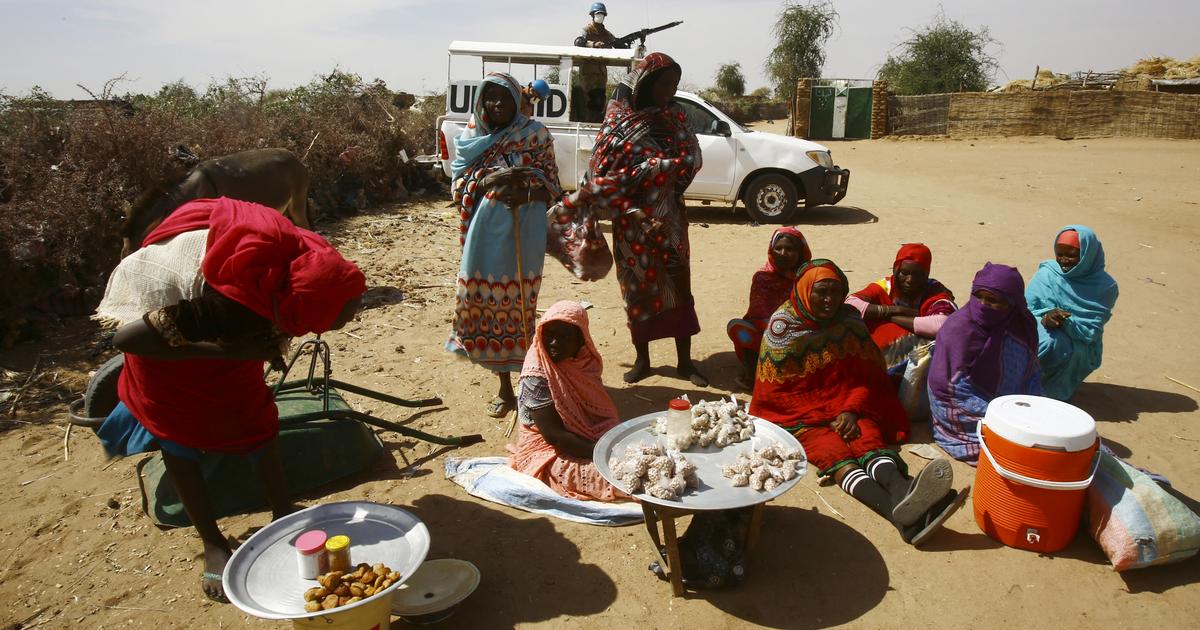The Spanish border with Morocco, in the attempt to overcome the Melilla fence on June 24. Javier Bernardo (AP)
Thousands of sub-Saharan migrants and refugees have been living in suspense for two months in Morocco, when on June 24 there was a massive entry into Melilla through the border in which dozens of Sudanese lost their lives, the majority nationality among those who staged the jump to the fence
As of July 30, 1,787 Sudanese and South Sudanese nationals had registered as asylum seekers with UNHCR.
Many of them, protagonists in the last entries to Melilla, in March and June of this year, await an opportunity to leave the country and set foot on European soil.
They are joined by a large part of the 1,370 refugees and asylum seekers from the Ivory Coast, 1,085 from Cameroon and 2,786 from Equatorial Guinea.
Malians and Burkinabe are not even reflected in the statistics by nationality, they are part of another 3.
In Morocco there is no established asylum system.
The Government has been working on the implementation of an asylum strategy since 2013 in which UNHCR is a priority partner in the identification of refugees.
Supposedly, people identified as asylum seekers by the UN agency can work in certain informal sectors and have access to some economic aid and health care.
However, the funds to care for the refugee population are historically insufficient: of the 9.5 million euros that UNHCR requires to care for more than 19,000 registered people (a quarter, more than 5,000, Syrians), only finance 18% until August this year.
The European Union has committed aid of 500 million euros to Morocco for migratory control until 2027. Of that item,
Fence
nador
Spain
Melilla
Melilla
Morocco
Neighborhood
Chinese
Step
frontier
3
Instead of making a
jump like in others
occasions try to open
the gates of the complex
Fence
two
They head to the pass
border "neighborhood
Chinese"
swimmer
1
About 1,700 migrants
descend from
Mount Gurugú on June 24
Mountain
Gurugu
300m
Fence
Spain
nador
Melilla
Melilla
Morocco
Neighborhood
Chinese
Step
frontier
3
Instead of making a
jump like in others
occasions try to open
the gates of the complex
Fence
two
They head to the pass
border "neighborhood
Chinese"
swimmer
1
About 1,700 migrants
descend from Mount Gurugú
the 24th of June
Mountain
Gurugu
300m
Fence
nador
Melilla
Melilla
Spain
Morocco
Neighborhood
Chinese
Step
frontier
3
Instead of making a
jump like in others
occasions try to open
the gates of the complex
Fence
two
They head to the pass
border "neighborhood
Chinese"
swimmer
1
About 1,700 migrants
descend from Mount Gurugú
the 24th of June
Mountain
Gurugu
300m
Fence
Melilla
nador
Melilla
Spain
Morocco
Neighborhood
Chinese
Step
frontier
3
Instead of making a
jump like in others
occasions try to open
the gates of the complex
Fence
two
They head to the pass
border "neighborhood
Chinese"
NADOR
1
About 1,700 migrants
descend from Mount Gurugú
the 24th of June
Mountain
Gurugu
300m
The situation is different for refugees from Arab and sub-Saharan countries.
The latter are systematically persecuted, especially in the north of the country, as organizations such as the Moroccan Association for Human Rights (AMDH) have been denouncing for years.
Asylum seekers are supposedly protected against arbitrary arrests and forced transfers, but testimonies collected by EL PAÍS attest that the UNHCR registration flyers are nothing more than a dead letter.
The objective is to prevent them from taking shelter in camps around hot spots such as Nador, a city bordering Melilla, and trying to cross the fence, as happened on June 24.
133 people managed to reach the Temporary Immigrant Stay Center (CETI) in Melilla after a pitched battle broke out on the border that left at least 23 dead,
During the previous days, the AMDH had already identified several camps in the area, but up to 50 kilometers from the border.
The organization has denounced that the Moroccan forces themselves, in several raids, pushed migrants and refugees to the vicinity of the perimeter.
The same migrants reported that they had no other choice but to march towards the fence.
Between 1,500 and 2,000 people tried to enter Melilla through the Barrio Chino border crossing, closed since 2020.
The design of the post, with turnstiles and barriers to regulate traffic, turned it into a mousetrap in which hundreds of people were trapped at once.
Moroccan security forces had deployed a device never seen before in previous mass jumps since 2014. Some 2,000 agents let the migrants reach the crossing from the groves of nearby Mount Gurugú and locked them against the border perimeter, preventing that they back down.
The area was covered by the smoke that was also released from Spanish soil, as confirmed by the AMDH.
The result was a horrifying image of exhausted bodies on the ground that went around the world through social networks.
The action of the Moroccan forces marked a turning point after the reestablishment of diplomatic relations between Madrid and Rabat, damaged on account of the sovereignty of Western Sahara, and the reactivation of coordination between the two countries in migratory control.
In March of this year, Melilla experienced the greatest jump to the fence in history.
2,500 people came to try to enter on two consecutive days, 922 succeeded without meeting much resistance on the Moroccan side.
Two weeks later, the change in position of the Executive of Pedro Sánchez with respect to the former Spanish colony was made public.
"[Migrants and refugees] are afraid to return to Nador and this is one of the main messages that the authorities have wanted to convey with all the repression that we saw and the deaths on June 24," says Omar Naji, representative in Nador of the Moroccan Association for Human Rights (AMDH).
The work of this independent organization during the days that followed the so-called "Black Friday" managed to force an investigation by the Moroccan authorities into the actions at the border and prevented the bodies of the 23 deceased, according to official confirmation, from being buried. prematurely and without autopsy.
The AMDH assures in a report that there were 27.
Although the investigation has ended, the results of the autopsies have not been made public and the identification of the dead is still taking place.
"The AMDH in Nador was able to help in this identification thanks to the data it was able to collect, but the authorities refuse to do this purely humanitarian work," he criticizes, "in the face of this refusal and all this delay, the families of the disappeared will travel to Nador to know the fate of their loved ones”.
Activists in Nador have managed to identify up to 64 missing persons and continue to work to find their whereabouts.
Many friends and relatives are still looking for young people about whom nothing is known and who may or may not have been transferred to the center of the country.
Undertaking the return to the north to try to cross again is not an easy task.
Much less with an empty pocket.
It is essential to finance the trip, generally with taxis or cars that take them to Nador or Tetouan after payment and in secret, since they do not even have access to public transport: “A Sudanese in Beni Mellal, Casablanca or Rabat cannot buy a bus ticket to come to Nador”, points out Naji.
The other option is to walk more than 500 kilometers to Nador.
Going out on a boat to the Canary Islands or Andalusia at a cost of around 5,000 euros is unthinkable.
For Omar Naji, this is the perverse effect of what he calls "the marketing of migration": "The migration of Moroccans and Sub-Saharans by sea is tolerated because it is paid for and is controlled by mafias both in the south and in the north, while the poorest immigrants who pay nothing are treated with all this violence when they approach the border.”
50% off
Subscribe to continue reading
read without limits
Keep reading
I'm already a subscriber







/cloudfront-eu-central-1.images.arcpublishing.com/prisa/E3I6SSZZQ6W6BXIAXV5VG36JCY.jpg)
/cloudfront-eu-central-1.images.arcpublishing.com/prisa/NHY25SDHJVC45K6D6SVJC32DCQ.jpg)
/cloudfront-eu-central-1.images.arcpublishing.com/prisa/VS4RJNOL7ULGHTZDNQQRIWEYIA.jpg)